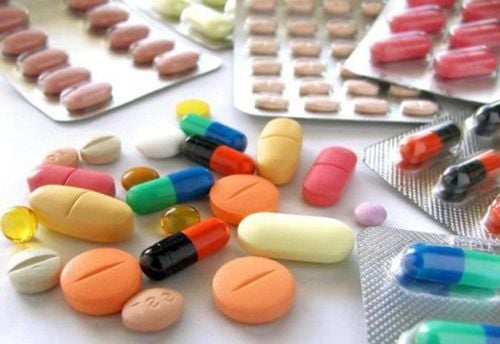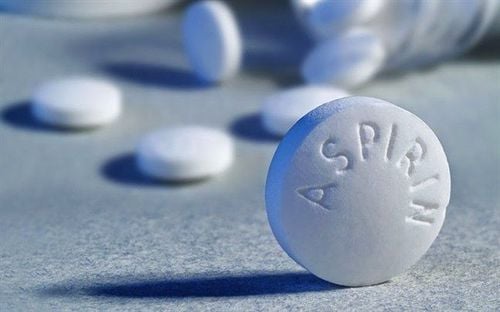This is an automatically translated article.
Coronary artery spasm is a sudden tightening of the arteries that bring blood to your heart. The contractions are quick and may not be painful, but they can increase the risk of a heart attack. Coronary artery spasm usually occurs late at night or early in the morning and can keep you awake. Treatment focuses on relieving chest pain and preventing spasms.
1. What is coronary artery spasm?
Coronary artery spasm is chest tightness or pain caused by tightening of the heart arteries. There may also be arm or jaw pain. These symptoms can occur spontaneously or as a result of cold weather, exercise, or stress. In some cases, they may be related to the menstrual cycle. Unlike angina, which is caused by fatty plaques that block the arteries to the heart, it is caused by the contraction of the muscle layer in the blood vessel walls, leading to a temporary blockage of the artery.
Some patients have both coronary artery spasm and microvascular angina (problems with the smallest arteries supplying the heart), or even this with blockages caused by fatty plaques .
2. Causes and factors of coronary vasoconstriction
The main cause of coronary artery occlusion is endothelial dysfunction. This reduces blood flow. If prolonged, this reduced blood volume can lead to a heart attack. However, there are certain traits, conditions, or habits that may increase your risk of this condition. These are called risk factors and include:
2.1. Non-modifiable risk factors These factors are non-modifiable and cannot be changed. The more of these risk factors you have, the greater your chances of developing coronary artery spam:
Older age Family history Female gender 2.2. Modifiable risk factors These factors can be modified, treated, or controlled through medication or lifestyle changes:
High blood pressure High cholesterol Diabetes: when your blood sugar levels are high. You, also known as blood sugar, are too high. Little or no physical activity Being obese or having a body mass index “BMI” of 30 or higher Excessive use of stimulants (eg cocaine and amphetamines)
3. Antispasmodic drugs
3.1. Nitrates Most people are given nitroglycerin, which helps relieve pain by lowering blood pressure, reducing the workload of the heart, and possibly by dilating the arteries. Usually, it is first injected under the tongue, then intravenously.
3.2. Morphine Most people who have had a heart attack experience severe discomfort and anxiety. Morphine has a calming effect and reduces the workload of the heart. It is given when nitroglycerin cannot be used or is not effective; however, recent data suggest that it may interact with antiplatelet drugs and reduce their effectiveness and possibly increase the risk of death.
3.3. Beta-blockers Because reducing the heart's workload also helps limit tissue damage, beta-blockers are often given to slow the heart rate. Slowing down the heart rate helps the heart work less hard and reduces the area of damaged tissue.
3.4. Calcium channel blockers Calcium channel blockers stop blood vessels from narrowing (spasm) and may counteract coronary artery spasm. All calcium channel blockers lower blood pressure. Some of these drugs, such as verapamil and diltiazem, can also lower your heart rate. This effect can be helpful for many people, especially those who cannot take beta-blockers or who are not getting enough nitrates.
3.5. Ranolazine Ranolazine is a medicine used to treat angina in people who continue to have symptoms despite all other antianginal therapies. It may be more effective in women than in men.
3.6. ACE inhibitors and angiotensin II receptor blockers ACE inhibitors and angiotensin II receptor blockers (ARBs) can reduce cardiomegaly and increase the chances of survival for many people. So these drugs are usually taken for the first few days after a heart attack and are prescribed indefinitely.
3.7. Statins Statins have long been used to help prevent coronary heart disease, but doctors have recently discovered that they also have short-term benefits for people with acute coronary syndromes. Doctors inject statins into people who haven't already.
3.8. Antiplatelet drugs People who think they may have a heart attack should chew an aspirin immediately after calling an ambulance. If aspirin is not taken at home or given by emergency personnel, it should be taken immediately to the hospital. This therapy improves the chances of survival by reducing the size of blood clots (if any) in the coronary arteries. People may also be given other antiplatelet medicines such as clopidogrel, ticlopidine, or ticagrelor taken orally, or a glycoprotein IIb/IIIa inhibitor given through a vein (intravenously).
3.9. Tumor-dissolving drugs Clot-busting drugs (thrombolytics) are injected into a vein to open an artery if percutaneous coronary intervention cannot be performed within 90 minutes of the person's arrival in the hospital.
3.10. Anticoagulants Most people are also given an anticoagulant, such as heparin, to help prevent further formation of blood clots.
Usually, oxygen is delivered through nasal prongs or a mask. Delivering more oxygen to the heart helps keep heart tissue damage to a minimum.
4. Some notes when using drugs to treat coronary artery spasm
4.1. Medication Precautions In acute coronary syndrome, a sudden blockage in a coronary artery reduces or cuts off blood supply to an area of the heart muscle (myocardium). Lack of blood supply to any tissue is called ischemia. If the supply is greatly reduced or is cut off for more than a few minutes, the heart tissue dies. A heart attack, also known as a myocardial infarction (MI), is the death of heart tissue due to ischemia.
There are many different reasons that doctors recommend using drugs to treat coronary artery spasms for patients:
To relieve chest pain by reducing the workload of the heart and widening the arteries (nitrates) To prevent angina and acute coronary symptoms occur (beta blockers, calcium channel blockers, and sometimes ranolazine) To prevent and reverse atherosclerotic coronary artery narrowing (enzyme inhibitors) ACE inhibitors, angiotensin II receptor blockers [ARBs], statins, and antiplatelet agents) To open a blocked artery (clot-busters, anticoagulants) 4.2. Lifestyle changes No matter which angina treatment you choose, your doctor will recommend lifestyle changes that are good for your heart. You can reduce or prevent angina by reducing your risk factors for heart disease, including:
Smoking: If you smoke, stop. If you need help quitting, talk to your doctor about smoking cessation therapies. Diet: Follow a healthy diet with limited amounts of saturated fat, trans fat, salt, and sugar. Include a variety of fruits and vegetables, whole grains, lean meats, and low-fat dairy products in your diet. Lack of physical activity: Talk to your doctor about starting a safe exercise plan. If your angina is caused by exertion, correct yourself and rest. Excess weight: If you are overweight, find ways to achieve and maintain a healthy weight by balancing the amount and substance you eat with the amount of physical activity you are active. Ask your doctor what is the right weight for you. Medical conditions: Treating conditions that can increase your risk of angina, such as diabetes, high blood pressure, and high blood cholesterol. Stress: Avoiding stress is easier said than done, but try to find ways to relax. Talk to your doctor about stress reduction techniques.
Please dial HOTLINE for more information or register for an appointment HERE. Download MyVinmec app to make appointments faster and to manage your bookings easily.













